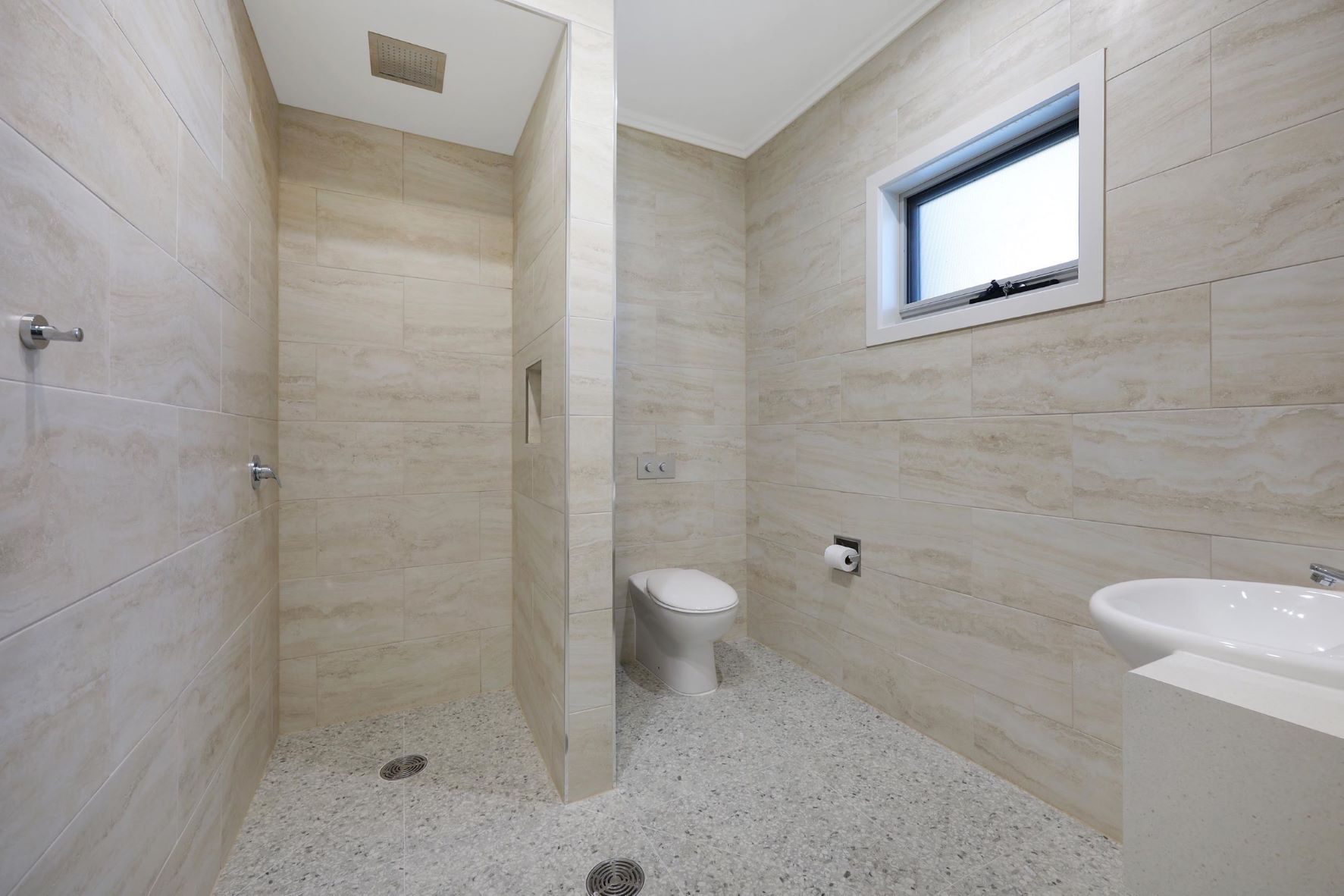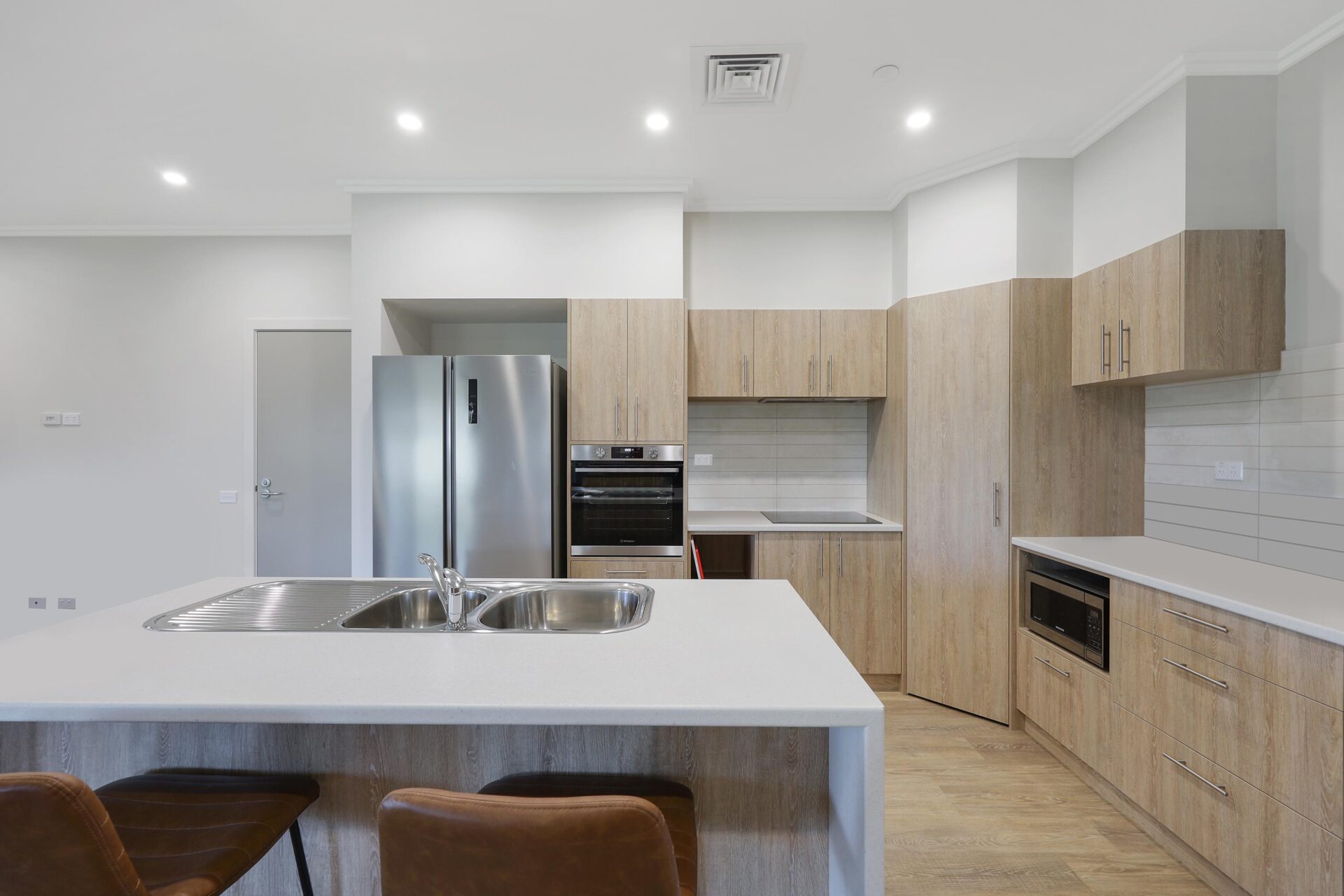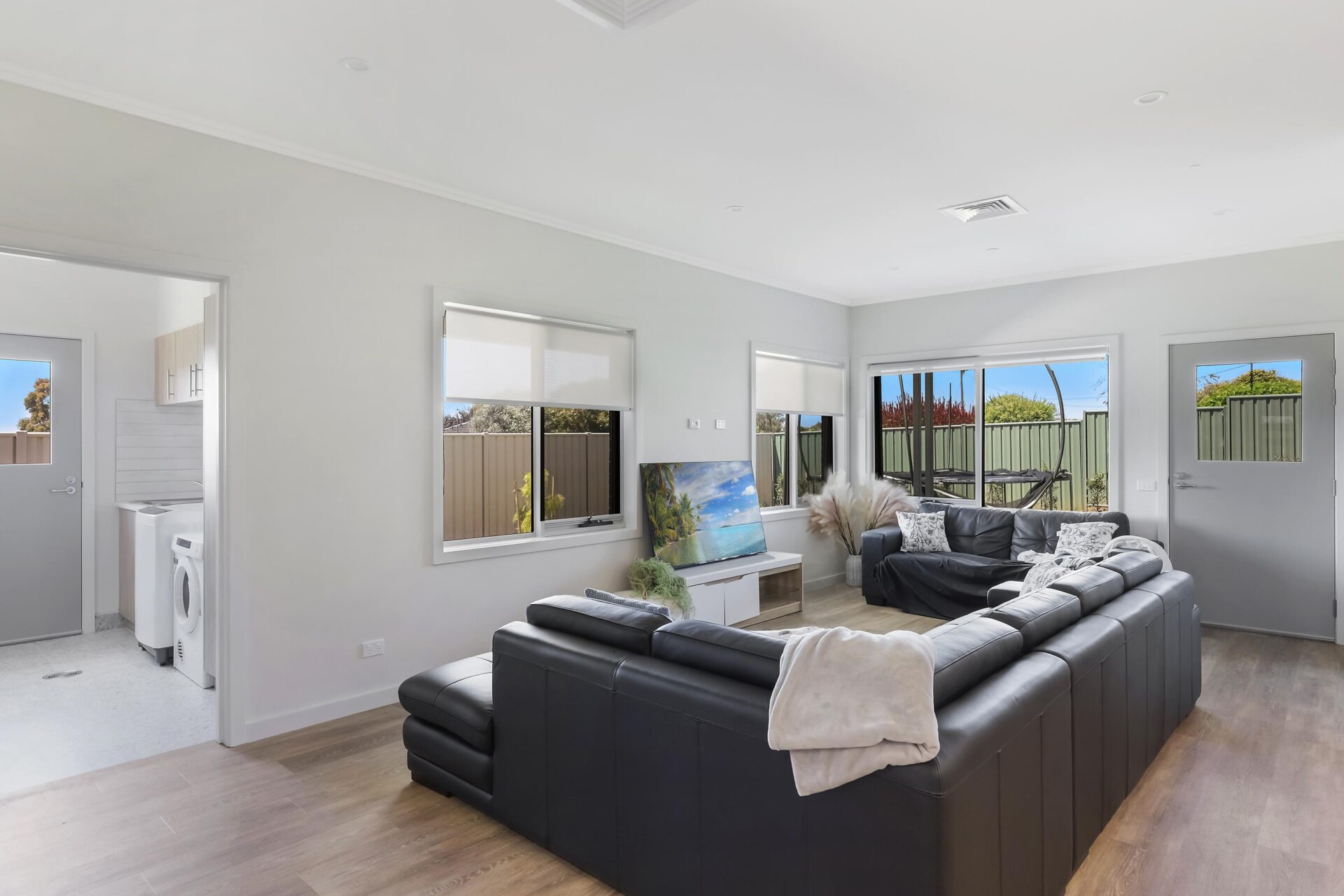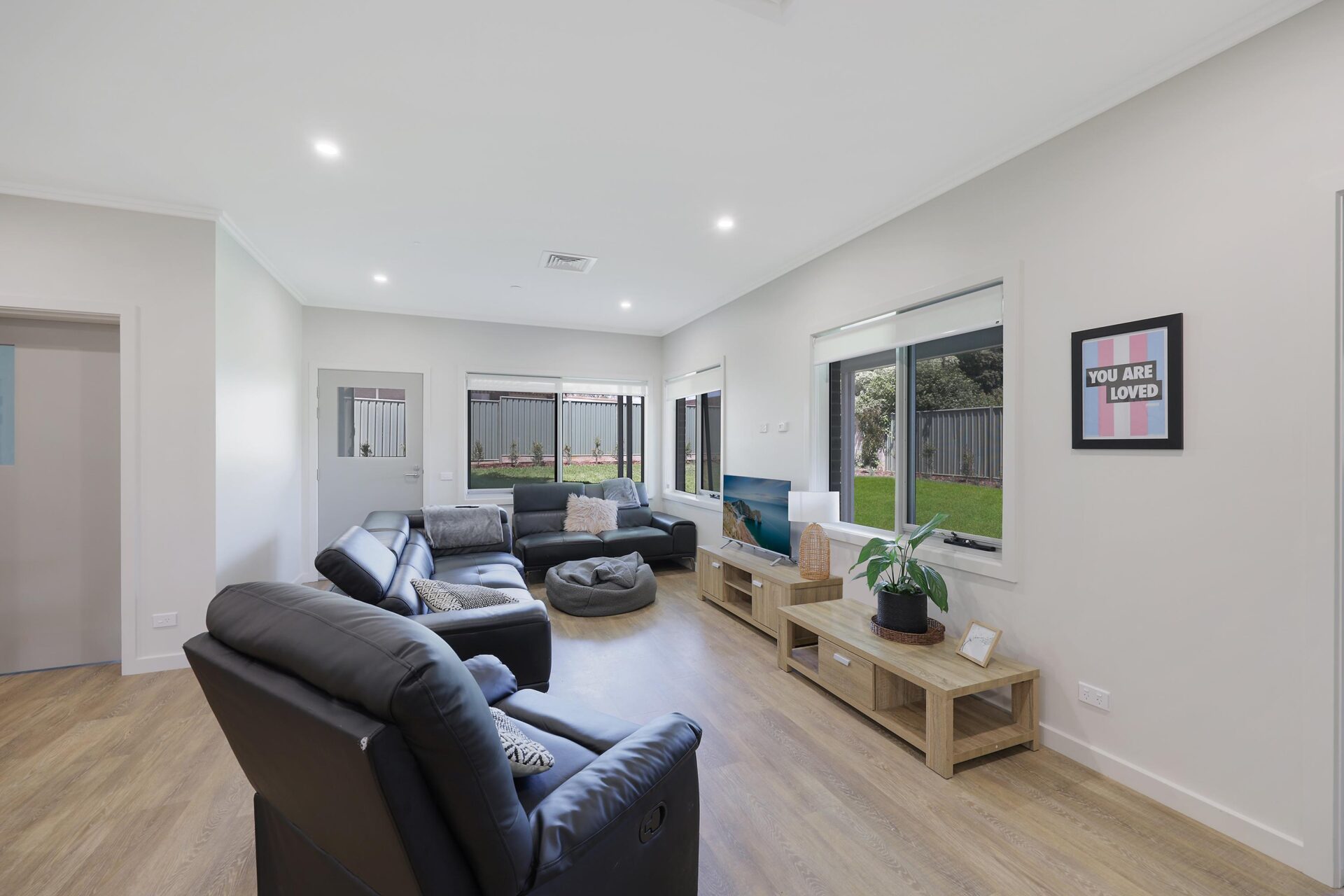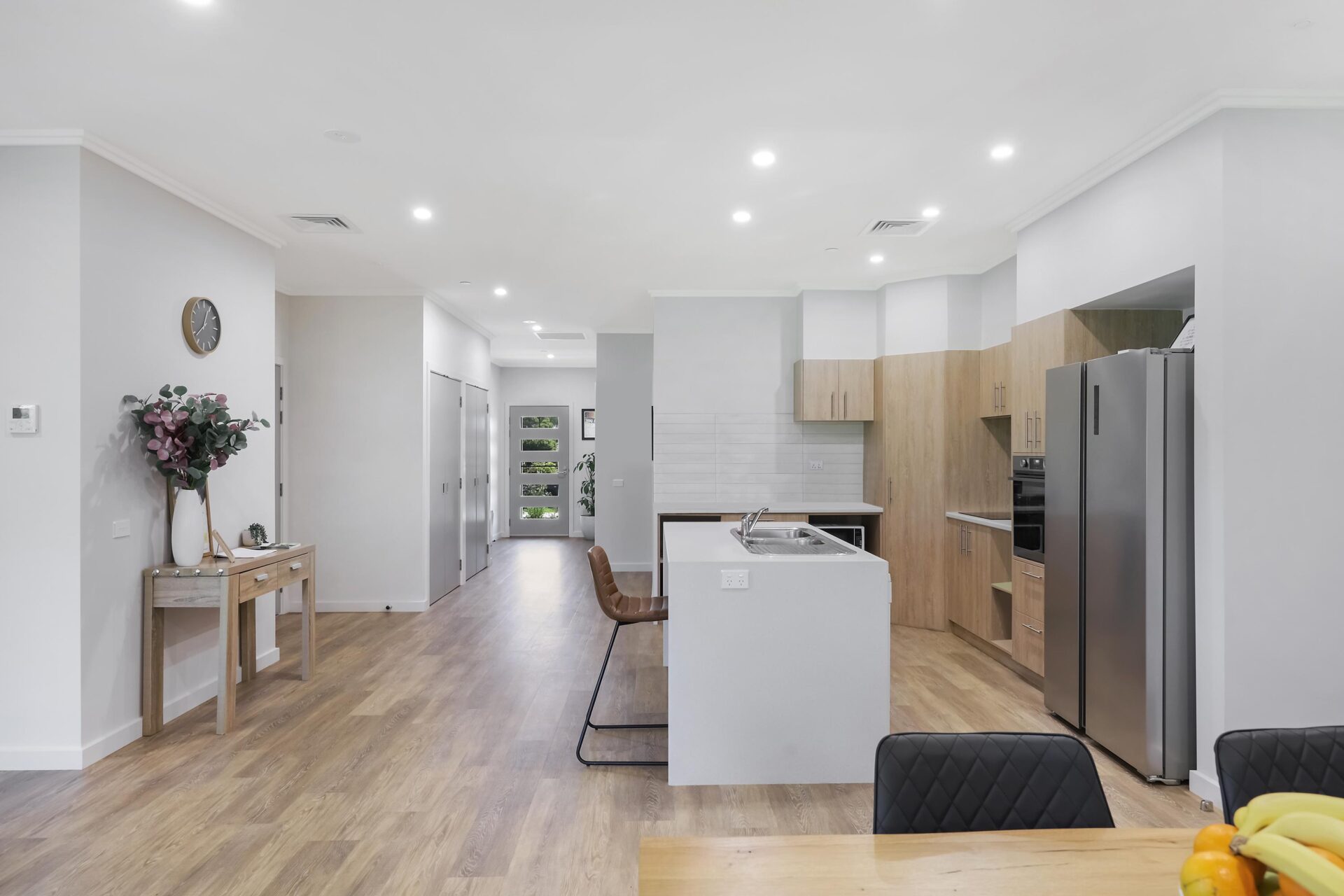Special Purpose Housing
Building Futures: How Innovative Housing Solutions Provides Stability to Disadvantaged Children
In a groundbreaking initiative, the Victorian Government’s Department of Family, Fairness and Housing (DFFH) engaged CKA to create housing options for the Out of Home Care program. This program provides homes and support for disadvantaged youth in government care, giving them a chance to thrive in a family-like environment.
The new homes, designed to blend seamlessly into suburban streetscapes, offer each child their own space within a large, well-lit bedroom. These bedrooms are equipped with a bed, chair, study desk, TV, computer, and space for personal objects and wall posters. Additionally, the homes feature comfortable lounges, dining, laundry, and kitchen facilities, creating a supportive and nurturing environment.
This initiative addresses the needs of many children across the state who are born into unfortunate circumstances such as family abuse, drug addiction, and mental health issues. These children, often wards of the state, may have never experienced normal family life or even had their own bedroom. By providing them with a stable home environment, the program aims to reduce the risk of poverty, youth crime, and eventual incarceration.
CKA designed the homes to be energy-efficient, affordable to build, and robust enough to withstand damage. They are also easy to clean and maintain. Importantly, the homes are supervised in a way that is not overt, allowing children to develop a sense of pride and responsibility.
The modern yet suburban look of these houses ensures that there is no stigma attached when the children attend local schools. Under supervision, they can invite visitors and build a normal social life. These homes are making a positive contribution to reducing youth crime and developing future good citizens.
Constructed quickly and efficiently, the homes are typically completed within eight months, with a budget of approximately $1 million for a 286 sqm three-client bedroom home with ensuites, overnight carer accommodation, energy-efficient appliances, and high-quality, robust materials and finishes. Standard designs allow for economies of scale in construction across projects, while permitting modifications and improvements based on lessons learned.
Feedback indicates that the homes provide an excellent environment for the children to grow and develop, and for their carers to function as a family dynamic. The careful design, documentation, and contract administration of these homes demonstrate that architects can achieve excellent results within tight time frames and budgets.
As of 2023, seven homes have been completed, with the remaining under construction and scheduled for completion before the end of 2024. This initiative exemplifies the critical role architects play in the social development and welfare of our society, showcasing how thoughtful design can create lasting positive impacts for disadvantaged youth.
Architect
Robert Caulfield

